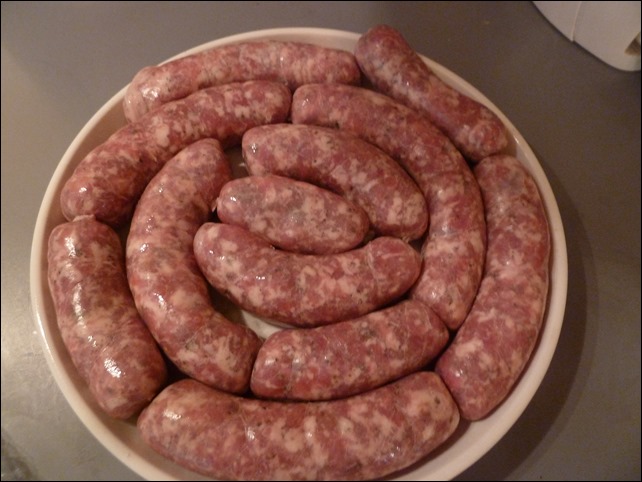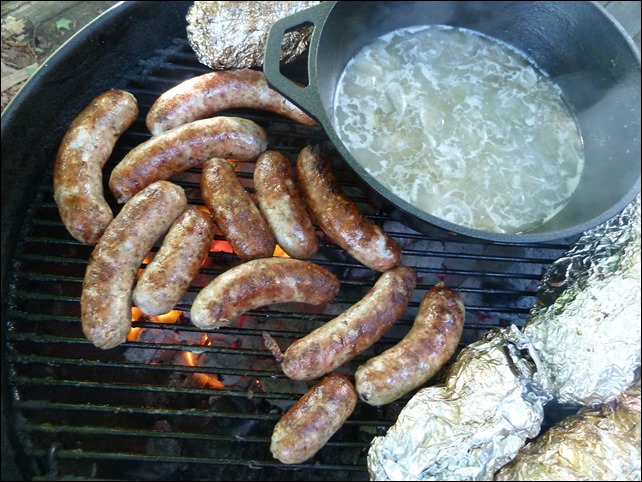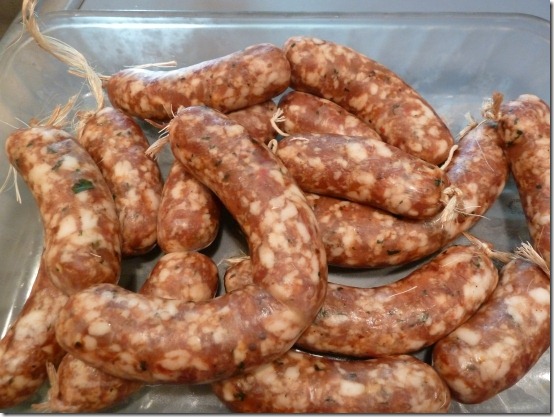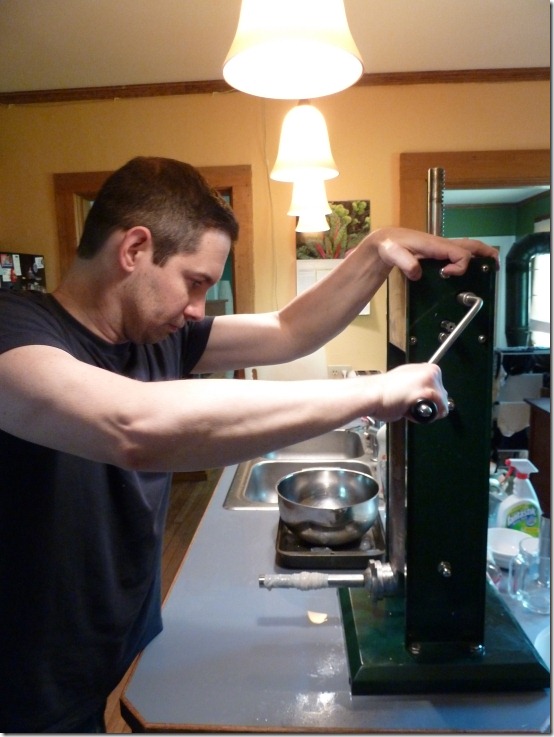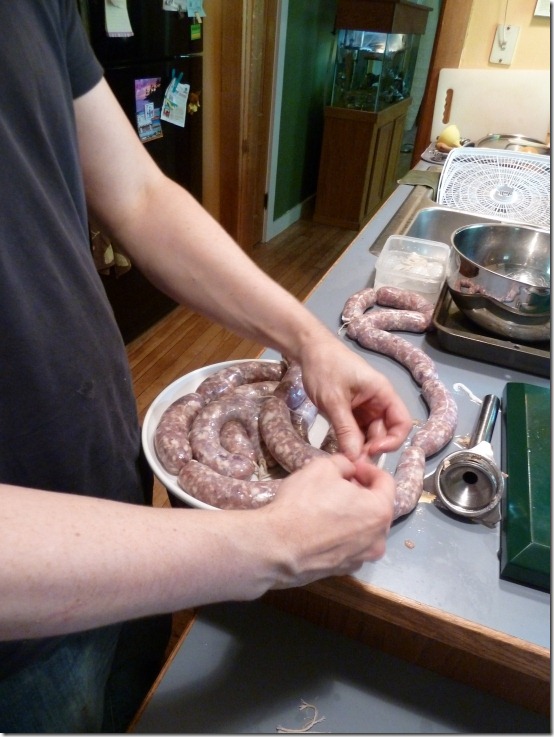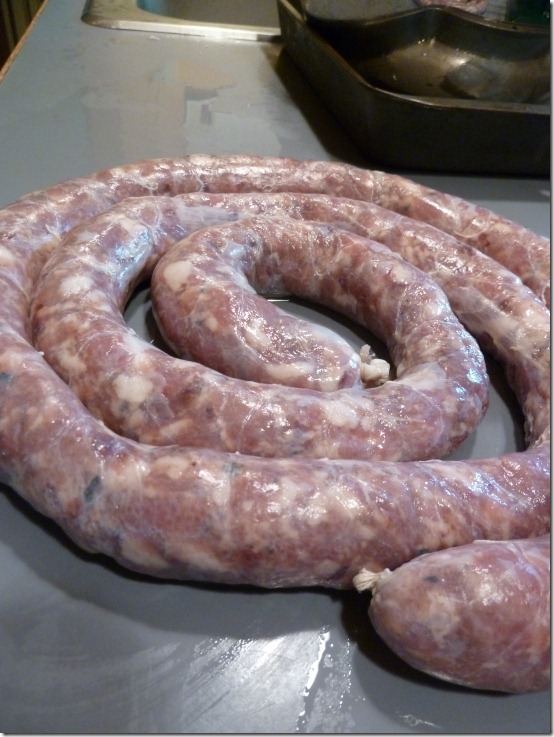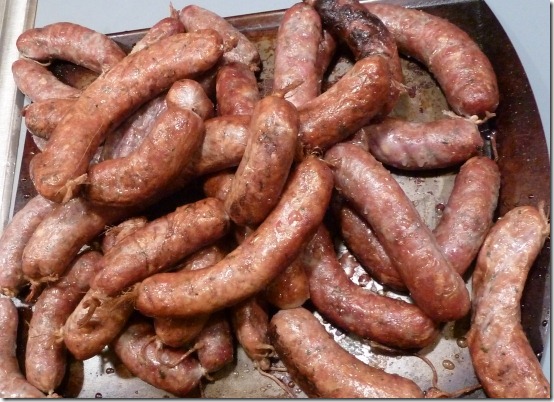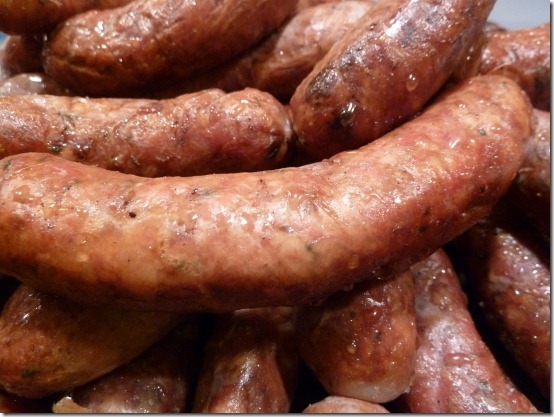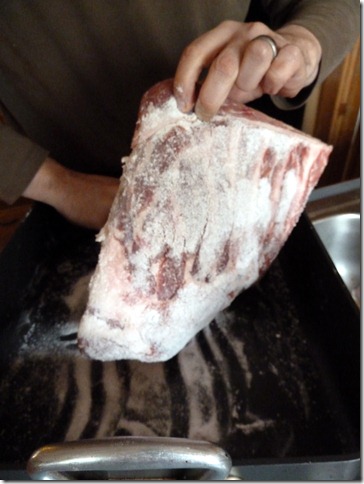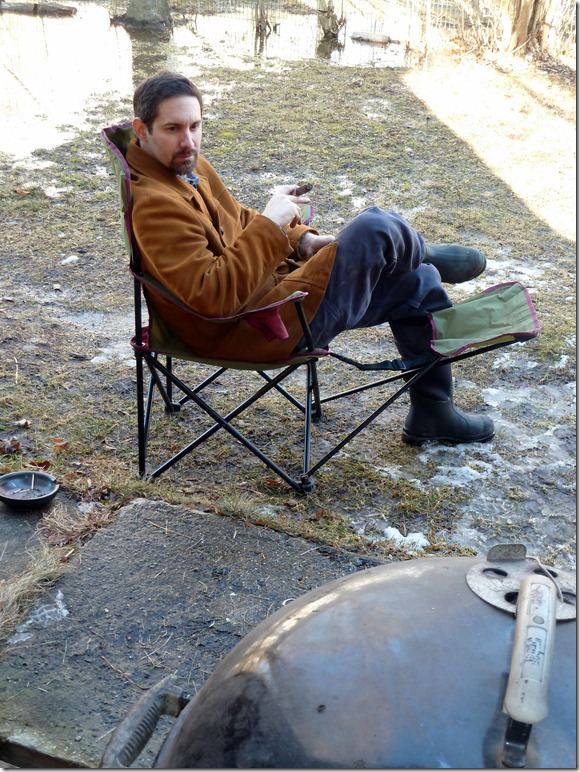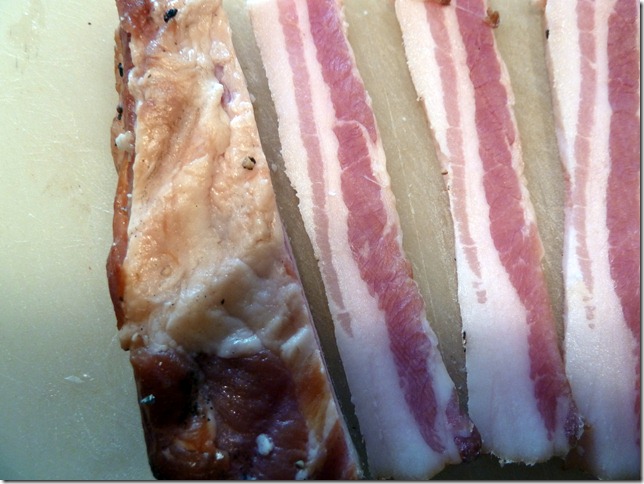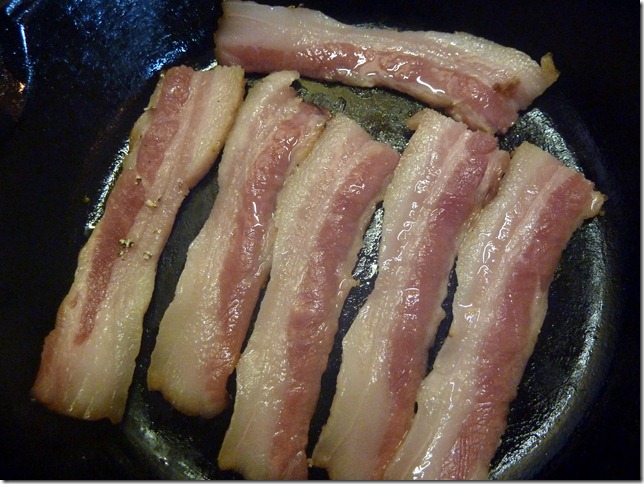I’ve been wanting to start learning how to make charcuterie (sausage, cured/smoked meats, bacon, etc.) as part of our overall trek towards growing and creating as much of our own food as possible. We also may raise our own hogs at some point. I got the Michael Ruhlman Charcuterie: The Craft of Salting, Smoking, and Curing book for Christmas and have been going through that for ideas. I also bought Home Sausage Making: How-To Techniques for Making and Enjoying 100 Sausages at Home
book for Christmas and have been going through that for ideas. I also bought Home Sausage Making: How-To Techniques for Making and Enjoying 100 Sausages at Home which is interesting for the sheer volume of ideas. Although vegetarian sausage? I don’t think so, at least not for me.
which is interesting for the sheer volume of ideas. Although vegetarian sausage? I don’t think so, at least not for me.
I’ve been talking to a couple local pastured pork farmers about getting the raw materials. The other night I took a trip over to Maple Wind Farm, about 20 minutes from here. I picked up a whole pork belly that was just beautiful, a little over 8 lbs. and nice and thick. Also grabbed two smaller pork shoulder roasts, which are really nice for making sausage. The fat content is about 30% naturally, particularly when you buy heritage pastured breeds, which is perfect for sausage. They had just gotten some lamb back from the butcher, so I got some of that as well. Certainly more expensive than super market meat, but for good reason. Better breeds, better feed, better living conditions and a lot more care goes into the animal husbandry. It’s money well spent to me, both to know exactly what I’m getting and the quality of the meat. If you are going to go to the trouble of making your own charcuterie, you want the highest quality meat you can get because the end result is only as good as the raw materials.
I made my first batch of about 3 lbs. of sausage last weekend, using the basic breakfast sausage recipe from the “Charcuterie” book. It’s an interesting recipe, full of lots of fresh ginger, sage and garlic. You end up with a very clean tasting sausage, full of lively flavors. I’m not sure I want it all the time as I like a spicier, more peppery sausage most of the time, but it turned out to be quite tasty.
Here are some pictures of the process.

A few years ago we found an antique meat/food grinder in New Glarus, WI. I think it is World War II era as the instructions mention a certain part is not available during the war (I guess due to metal rationing). Kinda cool. One reason I bought it was the possibility of making sausage, plus I really love old kitchen tools. Particularly ones that don’t require electric.

Everything you use has to be super cold, including the grinder if possible.

The grinder set up and ready to go. You grind into a bowl or tray that is set in ice. Once again, think cold, cold, cold.

The season mixture, cubed and ready to grind. This has been in the freezer as well until starting to get a bit icy, but not frozen.

The primary bind, where you add just a bit of ice water to bring it all together. As you can see, the grinder didn’t do a terribly fine grind. I was a bit worried about this, but it came together just fine. A bit smaller would be nice, but this works.

Quality control. It’s good to fry up a taster portion just to make sure the spices are where you want them. You can still add a bit more spice or other ingredients at this point.
So now that I understand the basic process a little bit, the next step is to try stuffing the sausage into casings and try some other recipes. There is a chicken sausage recipe that looks awfully good…

